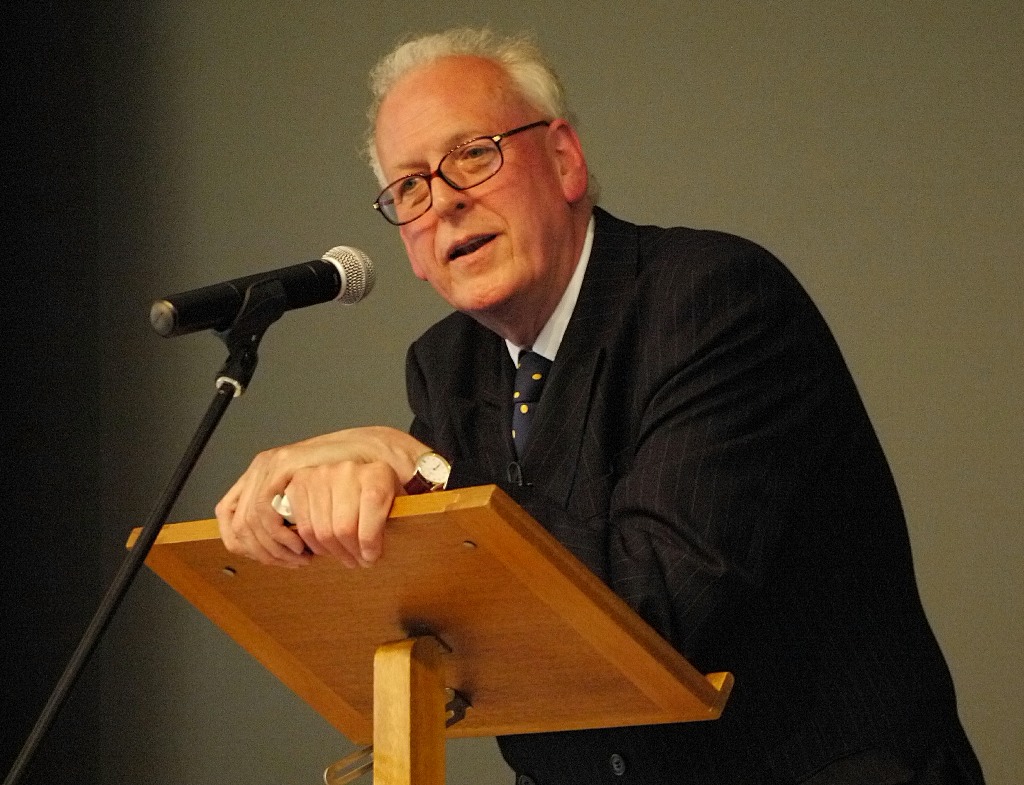Just back from the annual Lee Seng Tee Lecture at my college, which was given this year by Peter Hennessy, Britain’s most interesting constitutional historian. His title was “Watching Prime Ministers”, which he interpreted as an analysis of how the functions of the Prime Minister have evolved since the war. It was largely distilled from his book on the subject — The Prime Minister: The Office And Its Holders Since 1945: The Job and Its Holders Since 1945 and was a classic Hennessy performance. That is to say it was conversational, informal, gossipy, thought-provoking, irreverent and informative. It was also leavened with the odd bit of ham acting: one was left thinking that somewhere on his CV there must be a spot of amateur dramatics. He’s an excellent mimic: his impersonation of David Bellamy, for example, was pitch perfect. The only thing that grated slightly was the way he contrives to leave his audience in no doubt that he’s really an insider — someone on first name terms with all the leading politicians, a regular attendee at No 10, privy to lots of off-the-record conversations that the less privileged members of the audience can only dream of. One has the feeling that if one expressed one’s loathing of namedropping to him would reply: “My dear boy, I couldn’t agree more — and I was saying just that to the Chancellor only yesterday”.
But one forgives him because he is such a terrific chronicler and explainer of our recent past. Like me, he’s a great admirer of Clem Attlee, and Never Again: Britain 1945-1951, his book on the Atlee government is, IMHO, masterly.
His lecture took us on a tour of the functions of the office of Prime Minister as they have expanded since the war. The most striking thing to emerge from his analysis is the inverse relationship between (i) the functions of the office and (ii) Britain’s importance in the world.
For example, the Cabinet Office list of Prime Ministerial functions prepared for Clement Attlee in 1947 ran to only 12:
1. Managing the relationship between the Monarch and the government as a whole.
2. Hiring and firing ministers.
3. Chairing the Cabinet and it’s most important committees.
4. Arranging ‘other Cabinet business’, i.e. chairmanships, agendas, memberships of other committees.
5. Overall control of the Civil Service.
6. Allocation of functions between departments; their creation and abolition.
7. Relationships between other heads of government.
8. An especially close involvement in foreign policy and defence matters.
9. Top Civil Service appointments.
10. Top appointments to many institutions of ‘a national character’.
11. ‘Certain scholastical and ecclesiastical appointments’.
12. The handling of ‘precedent and procedure’.
By the time David Cameron arrived in office in 2010, this list had expanded to 47. Yet over the intervening 63 years Britain’s place in the world had shrunk dramatically. The country had, as Dean Acheson memorably observed, lost an empire and failed to find a role — other than as the United States’s poodle. Yet its First Minister was busier than ever. Clearly, Prime Ministerial work is like a gas: it expands to fill the space available.
LATER: There is, of course, one responsibility that Attlee didn’t initially have to shoulder that all his successors have had to take on — personal responsibility for the use of UK nuclear weapons. This went through two phases: first, when the UK’s strike capability was airborne only; and second, after JFK gave Harold Macmillan access to US submarine-launched technology and Britain acquired its own so-called ‘independent’ nuclear deterrent. Hennessy was very interesting on this function of the Prime Minister, which he calls “end of the world stuff”. The big issue is the instructions that Trident captains are given before embarking on the 90-day patrol during which time they are are largely incommunicado. Each incoming PM is now required to write, on four handwritten sheets of paper, the four options that the commander of the submarine is given. These sheets are then sealed and the envelope lodged in the submarine’s safe. Hennessy raised a grim laugh when he claimed that Tony Blair “went white” when this was explained to him, and speculated that one of his concerns was that the trident patrols are not synchronised with the electoral cycle: when Blair arrived in Downing Street, one of the subs was on patrol — with John Major’s handwritten instructions in the vessel’s safe!

